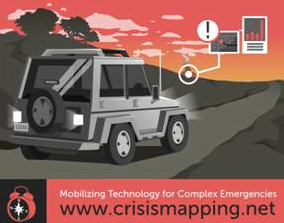Ed note: The report Disaster Relief 2.0: The Future of Information Sharing in Humanitarian Emergencies analyzes how the humanitarian community and the emerging volunteer and technical communities worked together in the aftermath of the 2010 earthquake in Haiti, and recommends ways to improve coordination between these two groups in future emergencies. The UN Office for the Coordination of Humanitarian Affairs (OCHA), together with the United Nations Foundation and Vodafone Foundation Technology Partnership, commissioned the report, which was researched and written by a team at the Harvard Humanitarian Initiative.
The Disaster Relief 2.0 Blog Series provides a public forum for people from both the humanitarian and volunteer and technical communities to discuss ideas in this report and the future of disaster relief.
You can follow conversations about the report on Twitter using the hashtag #DisasterTech and on the UN Foundation’s Facebook page.
Haiti, A destination, Or a Milestone?
By Nigel Woof
The Disaster Relief 2.0 report highlighted what was achieved by passionate and committed volunteers in Haiti. But for MapAction’s case it took more than twenty previous humanitarian crises to get there. Here are a few reflections from that journey, along which Haiti was a milestone.
We’ve learned that, in a humanitarian crisis, information is valuable in three main ways. Firstly of course to enable the first responders to deploy their initial rescue and needs assessment resources. Secondly, to provide actionable information to humanitarian donors (usually via the IASC Flash Appeal). Then, to support the balanced and coordinated programming and delivery of aid to meet assessed needs. While the report conjures images of individuals rescued by an SMS from a member of the public, it is the second application – persuading donors to commit funds – that has the most crucial real impact for thousands of people in need, in virtually all disasters.
So, information managers have a moral responsibility to focus their time on providing relevant and actionable intelligence to humanitarian decision makers. Note: intelligence, not just information. The problem of ‘information overload’ is made worse when the intelligence requirement is not clearly defined. We may often have to work with the humanitarian leadership to articulate these intelligence needs: what needs to be known, and understood, by when? Information demand side first, then supply side. Very ‘1.0’? Maybe, but still correct in our view.
Our second learning experience has been the need for predictability of action. If my family had been caught up in a disaster I’d want to know the response was well orchestrated and rehearsed. I’d be less than reassured by the prospect that a new ‘response ecosystem’ would emerge spontaneously (even though, to some degree that’s always the case). Saying what you will do, and then doing it, is fundamental to humanitarian interoperability.
A final reflection: when MapAction was ‘invented’ in 2003 we rightly had to persuade the established humanitarian actors that we could add value. We made many false assumptions about how disaster response ‘worked’ and needed to do more listening than talking about how we should configure our service. That’s probably the best advice we could pass on to the emerging ‘new Information Management community’: fixate on being a service provider to the people who actually save lives and relieve suffering on the ground. For our part we hope we’ll keep listening and learning through the next twenty emergencies
Nigel Woof is Chief Executive of MapAction (www.mapaction.org). MapAction is a specialist NGO that provides in-field mapping and information services in emergencies, frequently in partnership with OCHA and the UNDAC system. MapAction’s work in Haiti was documented in the Disaster Response 2.0 report.
